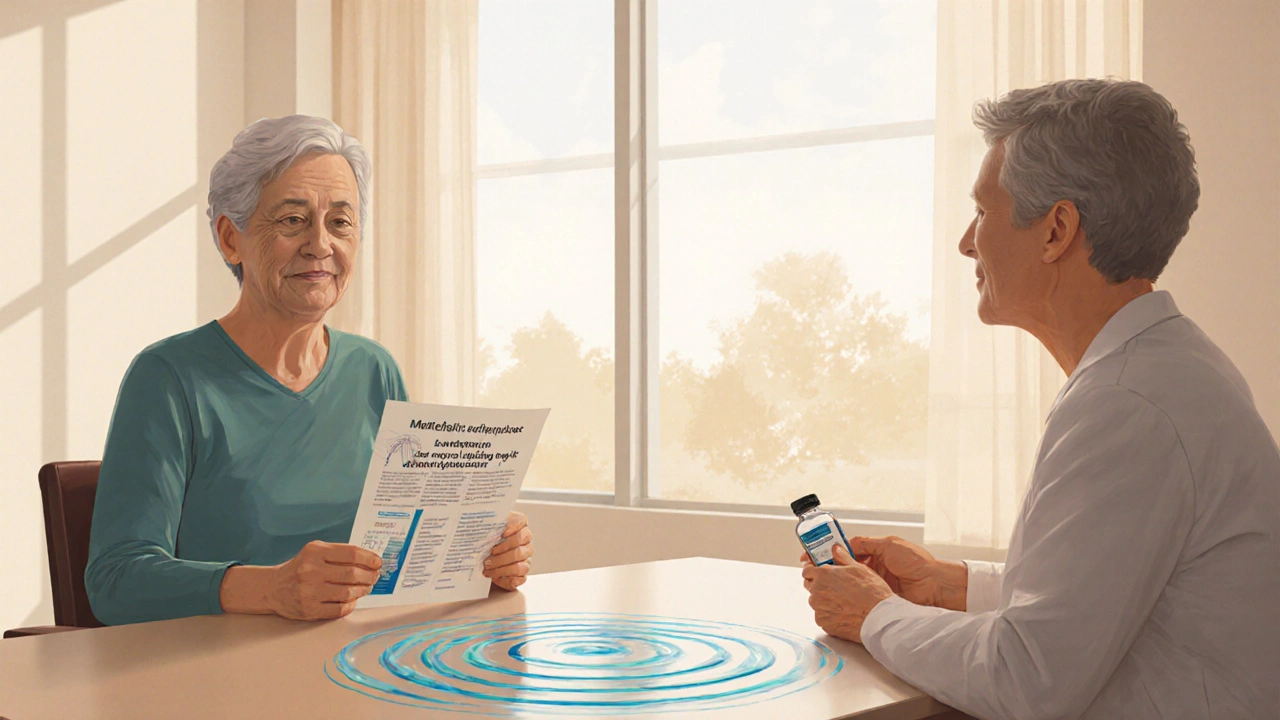Desmopressin Management: What You Need to Know
Desmopressin is a medicine that helps the body hold onto water. It’s used for conditions like diabetes insipidus, bed‑wetting, and some bleeding disorders. If you’ve just been prescribed it or are looking for a quick refresher, this guide will walk you through the basics – how to take it, what to watch for, and how to keep everything in balance.
How to Take Desmopressin Safely
First off, read the label. Desmopressin comes as a tablet, nasal spray, or melt‑film. The form you get will decide how you dose it. Most adults start with a low dose, often 0.1 mg taken once or twice a day. Kids usually get a weight‑based dose, so follow the doctor’s exact numbers.
Take the tablet with a full glass of water, but avoid drinking a lot right after. Too much fluid can dilute the drug and increase the risk of low sodium levels (hyponatremia). The nasal spray is usually taken in the morning and again before bedtime – just tilt your head back slightly and spray into each nostril as instructed.
Timing matters. Desmopressin works best when you take it at the same times each day. Set a reminder on your phone if you tend to forget. If you miss a dose, take it as soon as you remember unless it’s almost time for the next one. In that case, skip the missed dose – don’t double up.
Keep an eye on your water intake. Most doctors suggest limiting extra fluids to about 1 – 1.5 liters per day while you’re on the medication. This doesn’t mean you can’t drink; it just means you should spread it out and avoid large amounts all at once.
Common Side Effects and When to Call a Doctor
Most people feel fine, but a few side effects pop up. The most common are mild headache, nausea, and a feeling of fullness in the nose (if you use the spray). These usually pass within a few days.
Watch for signs of low sodium: nausea, vomiting, headache that gets worse, confusion, or seizures. If you notice any of these, call your doctor right away. Hyponatremia is rare but can be serious if you keep drinking a lot of water while on desmopressin.
Other red flags include excessive swelling, sudden weight gain, or shortness of breath. These could mean you’re retaining too much fluid. Again, reach out to your healthcare provider.
Storing the medication is simple. Keep tablets in a dry place at room temperature. The nasal spray should be refrigerated after opening and used within a month. Always keep them out of reach of children.
Regular check‑ups are part of good management. Your doctor will likely test your blood sodium and urine output every few weeks when you start, then less often once you’re stable. Bring any new symptoms to those appointments.
If you’re pregnant or planning to become pregnant, tell your doctor. Desmopressin is usually safe, but your provider will weigh the benefits and any risks.
Finally, don’t stop the medicine abruptly. If you need to stop, your doctor will taper you down to avoid rebound symptoms.
With these simple steps – consistent dosing, controlled fluid intake, and vigilant monitoring – you can manage desmopressin effectively and keep your condition under control.

Counseling’s Impact on Managing Central Diabetes Insipidus
Explore how counseling, especially CBT and patient education, enhances medication adherence, reduces anxiety, and improves quality of life for those managing central diabetes insipidus.
view more